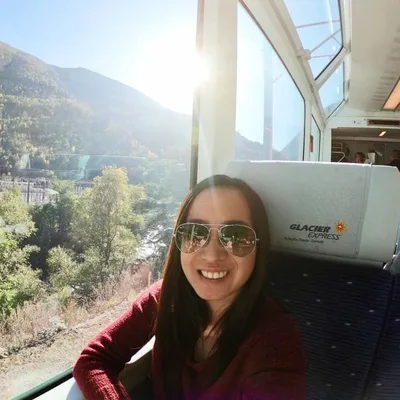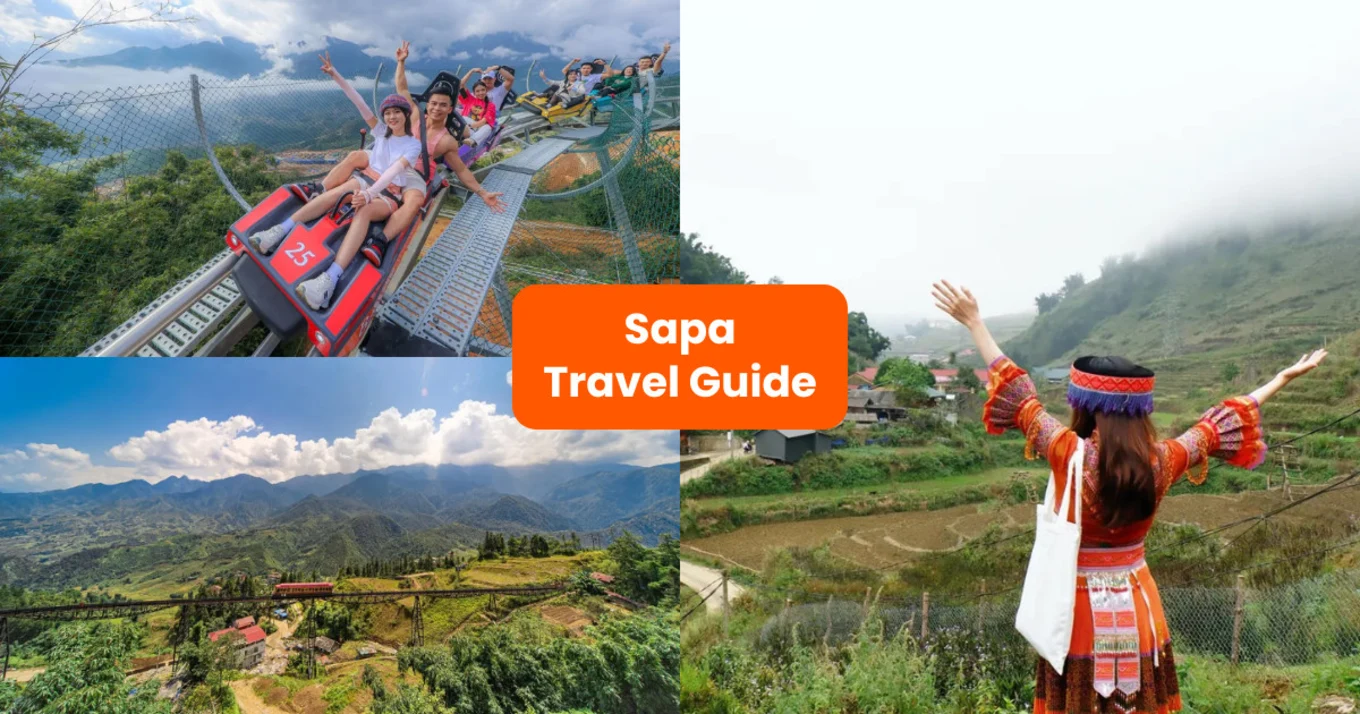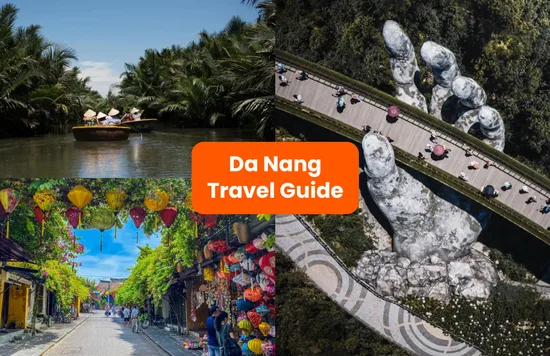Explore Sapa, Vietnam’s Hidden Gem
We’re just going to put it out there: everywhere in Sapa looks like it fell straight out of a storybook! Framed by gorgeous mountains, the town of Sapa entices with lush rice terraces, vibrant local villages, breathtaking treks, cooling weather, and more.
So the next time you’re in Hanoi, take a break from the dynamic chaos of the city — and spend a couple of days in this relaxing mountain retreat. Here’s everything you need to know about Sapa: including how to get there, things to do, and what to eat.
Best time to visit Sapa
Our favourite time to visit would be the shoulder seasons from March to May, and from September to November. The weather stabilises during these months, with frequent sunny days. In fact, in September and October, the rice fields start to glow a mesmerising golden yellow. The weather during these months is also perfect for hiking!
If you want to see the rice fields at their best, visit in June when they turn a verdant green. However, this is also the peak period in Sapa; meaning that you might have to jostle with lots of tourists. It’s also the rainy season, which might not be the most ideal for trekking.
Try to avoid visiting in winter, especially during the peak of December to January, when it gets very cold and foggy. However, if you’re lucky, you might be treated to a rare day of snow!
Temperature-wise, it averages around 15 degrees celsius; with a maximum of 29 degrees celsius in summer, and dropping to a low of -3 degrees celsius in winter. How that’s for a cool respite from the otherwise sweltering Southeast Asian heat?
How to get to Sapa from Hanoi
Sleeper train
Imagine going to sleep in Hanoi, and waking up in Sapa. You can do exactly that onboard a sleeper train! Choose from companies like Sapaly Express, Vicsapa, and Chapa Express — all of which offer different types of cabins on the same train. There are shared cabins and private cabins available, with twin or double bed options for the latter. That’s not all: you’ll even receive complimentary snacks, water, and towels.
#KlookTip: If you’re after more comfort, opt for Chapa Express.
Travelling with a kid in tow? A child below the age of six can even ride for free, as long as he/she shares a bed with their parents. The train departs from Hanoi train station at 10pm; upon reaching Lao Cai station, you’ll hop onto a nifty 70-minute shuttle bus that will bring you to Sapa by 7am. It’s super efficient and time-maximising!
Bus
For an extremely pocket-friendly option, take an overnight sleeper bus, or a day bus — whichever takes your fancy. Some of the buses are adorned with cute themed decorations, with single beds or double beds available. If you want more privacy, you can even opt for cabins with a curtain.
Private car charter
This option is perfect for families — plan your own transfer timings with a private car charter from Hanoi, which even throws some sightseeing into the mix. Otherwise, opt for a shared limousine transfer in a nine-, 11- or 16-seater minivan.
Tour
Sometimes, we just want to sit back and relax; and not have to settle all the nitty gritty transport details. We feel you! Luckily, there are lots of tours available that depart from Hanoi: opt for a 2D1N tour, or extend your stay with a 3D2N jaunt. This easy 2D1N tour also includes a homestay.
For active travellers, go for this 3D2N Mt. Fansipan mountain trek with camping; a 3D2N trekking trip with a cable car up Mt. Fansipan; or a 2D1N trekking tour.
Getting around Sapa
By public transport
Public buses are a complete gem in Sapa, being reliable and easy to use. Services are frequent, and the buses stop at most major attractions. They run from early morning until late at night; and, even better, each ride only costs around VND10,000 (~S$0.50).
Vehicle rental
Prefer more flexibility? Rent a car, motorcycle, or bicycle to discover Sapa on your own terms.
Taxi
Taxis are a slightly pricier option, albeit still proving to be a very pocket-friendly option compared to the rest of the world. Think: it’ll only cost around VND30,000-40,000 (~S$1.60-2) per ride! Easily flag one down on the street, or ask your accommodation to call you one.
#KlookTip: Always ask to be charged by the meter! Alternatively, agree on a set price before setting off.
Motorcycle tour
How’s this for a novel way to see Sapa? Embark on an eight-hour motorcycle tour, which brings you to local villages. Such a tour can be easily booked in Sapa itself, or in advance online.
Best things to do in Sapa
1. Trek to a local village
Indeed, what better way to take in Sapa’s breathtaking scenery than by taking your time on foot? Soak in the views whilst trekking to the surrounding mountain villages. Ethnic minorities, such as the Hmong, Dao, Tày, and Giay, inhabit these villages. Take your time to visit villages such as Cat Cat Village, Ta Phin Village, Lao Chai Village, Ta Van Village, and many more. Due to its proximity to Sapa, Cat Cat Village is the most popular of the lot.
Choose to explore by yourself, or take a guided trekking tour. Go on a half-day Cat Village half-day tour, a Lao Chai and Ta Van village day tour, or a private Ma Tra and Ta Phin village tour.
Besides the villages, marvel at the magnificent Muong Hoa Valley that’s famous for its rice fields.
2. Experience a homestay
Fully immerse in Sapa’s culture by booking an authentic homestay. The accommodation is basic (with mattresses and proper toilets), and usually comes without any air-conditioning or heating. Interact with your hosts, enjoy a homecooked meal, and experience Sapa’s renowned hospitality. If you’re lucky, you might even get to enjoy a herbal bath in the evening.
#KlookTip: Why not combine a homestay with a multi-day trekking experience? It’s the best of both worlds!
3. Go to the peak of Mt. Fansipan
Photo credit: Klook
Known as the ‘roof of Indochina’, Mt. Fansipan stands at over 3,000 metres above sea level. It’s the highest peak in Vietnam, drawing many climbing enthusiasts. The climb to Vietnam’s highest peak isn’t for just anyone, requiring a multi-day hike to reach the top.
However, if you just want to see the mountain without going through an arduous climb, you’re in luck! Simply hop onto a cable car, and feast your eyes on panoramic views along the way. The ride only takes around fifteen to twenty minutes; where you can either climb over 600 steps, or ride the funicular, to the peak.
#Klooktip: A 2D1N trekking tour is also great for travellers who wish to scale Fansipan Mountain on a cable car ride and visit Cat Cat Village.
The whole area is part of a collective called Sun World Fansipan Legend, which has many attractions, as well as retail and dining options. It also plays host to multiple festivals throughout the year!
#KlookTip: Before going up to the summit, don’t miss out on visiting the zen garden with a 20-metre-tall Buddha statue.
4. Ride on an alpine coaster
Have a one-of-a-kind experience onboard Sapa’s very first alpine coaster! Located near Mong Village, the alpine coaster brings you on a ride amidst the Hoàng Liên Sơn mountains — which is also Vietnam’s highest mountain range.
#KlookTip: The alpine coaster stops operating in inclement weather, so it’s best to check the forecast before heading down.
5. Step out onto a glass-bottomed bridge
Take a walk on a glass-bottomed bridge, if you dare! Located at 2,200 metres above sea level, the bridge offers splendid views of Vietnam’s ‘Four Great Passes’ from the Sky Gate of O Quy Ho. If you can, time your visit just before dusk to catch the sunset. Want to jazz up the experience? You can also walk across a suspension bridge; or go ziplining, bungee jumping, or paragliding.
#KlookTip: Visit between September to November for clear skies and great visibility. If you’re after a unique sight, visit from December to March to see the glass bridge and surrounding mountains shrouded by fog and a sea of clouds.
6. Rent a swan boat
Head to the centre of Sapa city to find the tranquil oasis of Sapa Lake. Rent a swan boat, or sip a cup of coffee — with a view! — at a café.
7. Visit the Sapa museum
Learn more about the history and culture of Sapa at the Sapa Museum, which is free to visit. The museum focuses heavily on the area’s ethnic groups, such as the Hmong and Red Dao!
8. Visit Heaven’s Gate
Marvel at a spectacular dream-like sea of clouds from many places in Sapa — the most famous of which is Heaven’s Gate. Found along the O Quy Ho Pass, Heaven’s Gate is located where the elevation reaches 2,000 metres above sea level. In fact, the journey up to Heaven’s Gate is impressive in itself!
Cloud hunting has become somewhat of a sport in Sapa too; other places to catch this natural phenomenon include from the peak of Mt. Fansipan, Hang Da Village, and Ham Rong Mountain.
#KlookTip: If you can’t get enough, book a stay at Pao’s Sapa Leisure Hotel to have the view right at your doorstep.
9. Trawl a local market
Photo credit: Klook
Spend a morning browsing one of Sapa’s local markets. The daily Sapa Market is great for gaining insight into local life, where you can hunt down cheap souvenirs. Visit on Sunday for the ‘big market day’, where the Black Hmong people travel far to peddle their wares.
Alternatively, take a trip to Bac Ha Market, the largest market in the area, which only operates on Sundays.
10. Take a trip to Love and Silver Waterfalls
Take a day trip to Love Waterfall, a secluded waterfall that is said to flow from the top of Mt. Fansipan. You won’t be able to drive right up to the waterfall; from the ticketing booth, you’ll have to go on a 30-minute walk on a cobblestone path through a forest to reach the falls. There are also canyoning tours available here.
On the way to Love Waterfall, be sure to drop by Silver Waterfall. Found right by the road, the waterfall is considerably more touristy. Climb the stairs to get to a viewing platform, which crosses in front of the falls itself.
#KlookTip: Save yourself the transport headache, and combine both waterfalls on a private day tour from Sapa.
11. Pamper yourself with a Red Dao herbal bath
Created by the Red Dao ethnic group, Red Dao herbal baths are renowned for their healing and medicinal properties. Each Red Dao family even has their own recipe, which is passed down through generations! The baths are especially useful for women who just gave birth; however, they can be enjoyed by everyone. They are said to relieve aches and pains, increase blood circulation, detoxify skin, or prevent colds.
Each bath has ten or more ingredients, including rare plants. The tubs themselves are also made by hand from Pomu wood! Each bath is heated to around 35 degrees celsius, and is held in a small room to maximise the fragrant effect.
Try the herbal bath at Ta Phin Village; or in Sapa, you can also go to Green’s Spa, Dao’s Center Sapa, or Silk Path Grand Sapa Resort and Spa.
12. Drop by Sapa Stone Church
Modelled after French architecture, the Sapa stone church was built in the 20th century. Check out the stained glass windows, and its unique architecture!
#KlookTip: Do note that the church is closed daily, and only opens to the public on Sunday for church service.
13. Support the local community
What’s an overseas holiday without buying some souvenirs for yourself, or for your family and friends back home? Do your part to support the local communities in Sapa by buying traditional handicrafts made by the ethnic locals. You’ll find these everywhere: in Sapa city, or at Cat Cat village. You might even be approached by the locals who are often proud to show you what they have!
What to eat in Sapa
14. Horse meat stew
Photo credit: Hanoi Capital Hotel
Yes, you read that right: horse meat stew is a traditional Hmong dish, and is one of Sapa’s most popular local delicacies. Horse meat is the star here; but the stew often contains other types of meat as well, such as goat, buffalo, pork, or beef.
The dish has an interesting backstory: the Hmong ethnic locals have always relied on horses as a mode of transport. When the horse gets old or sick, they often harvest the meat into stew. Every part of the horse — even the kidneys and intestines — is used for the stew, which is simmered for hours. Dig in at Hai Lam restaurant or Ca Tam Vua restaurant in Sapa.
15. Salmon hot pot
If you can’t bring yourself to stomach horse meat, opt for a salmon hot pot. Unbeknownst to many, Sapa’s climate is ideal for rearing salmon and sturgeon. Cosy up with a piping hot meal at Hotpot Center or Sapa King Salmon restaurant in Sapa.
16. Traditional BBQ
Warm up with a smoking traditional BBQ, a type of street food normally served at a roadside restaurant where you sit on small stools. Choose from a wide variety of skewers — think: meat, corn, eggs, and more. Each skewer is grilled fresh on the spot, and is best washed down with a gulp of local corn wine.
Due to their roadside nature, these restaurants can be found everywhere in Sapa. Just follow your nose, and you’ll find one!
17. Seven-colour glutinous rice
A treat for the eyes and stomach, the seven-colour glutinous rice delights with its rainbow of colours. Created by the Nung Dinh people, the dish was initially offered to their ancestors to pray for a plentiful harvest.
No chemicals are used to obtain the various colours; in fact, the colours are created using leaves and herbs. Each colour has a meaning behind it too; for example, green symbolises the vitality of spring. The Nung Dinh people also believe that the dish bestows luck to whoever eats it — try it for yourself at Sapa’s morning market!
18. Bamboo tube rice
Sticky rice is cooked inside bamboo tubes, creating a fragrant mixture that’s bursting with flavour. The dish was created as sustenance for ethnic minorities as they journeyed through the forests, as it’s easily cooked on the go. Sticky rice is combined with stream water, seasoned with salt, and placed in a bamboo tube. The tube is then sealed with banana leaves, before being roasted over an open fire.
The rice is often served with peanuts, soy sauce, or grilled meat. You’ll be able to find this dish everywhere in Sapa; notable places include the Sapa Grilling Area and Red Dao Restaurant.
19. Smoked buffalo meat
Snack on smoked buffalo meat, which is one of Sapa’s local specialities. The meat has a strong taste, which goes well with a blend of marinated spices. Mac khen, a type of forest pepper, is also used in the concoction, giving the meat an addictive spicy tang. The buffalo meat can be found everywhere in Sapa, but try it at one of the ethnic villages for an authentic experience.
20. Sapa pork
Colloquially known as ‘carried-under-arm pig’, the dish earned its name from a local custom that has been passed down generations. Local people used to carry small black pigs under their arms to fairs, where they’d sell the meat. The pigs are free-ranging and self-feeding, and are often found on steep mountainous slopes. Indulge in the aromatic meat dish at Hoa Dong Tien restaurant or Dung Trau restaurant in Sapa.
21. Grilled river fish
Savour river fish, which is known to be without any fishy taste. The fish can even be consumed whole — bones and all! Each piece is marinated with a blend of vegetables and spices, before grilling over charcoal. Try it at Quỳnh Restaurant or Gia Ban restaurant in Sapa; as well as at Cat Cat village and Bac Ha market.
22. Sapa peaches
Both sweet and sour at the same time, Sapa’s peaches have won the hearts of many. Why not buy some to enjoy during your trip, or bring them back home? Bite into this delicious fruit during peach season, which is from mid-May to mid-June.
#KlookTip: Save a spot in your itinerary for peach picking at Ta Phin Village, where you only pay for the number of peaches that you pick.
What is Klook?
Klook is Asia’s leading platform for experiences and travel services. We curate quality experiences ranging from attractions and tours to local transport and experiential stays, in over 2,700 destinations globally.
Browse our growing collection of travel activities and services in 15 languages, and complete bookings seamlessly with 40 currencies and over 40 payment methods.
Founded in 2014, we are here to inspire and enable more moments of joy for travelers anytime, anywhere. Whether it's something new in your neighborhood or an adventure abroad, with Klook you're always connected to a world of things to do and places to see.





















































